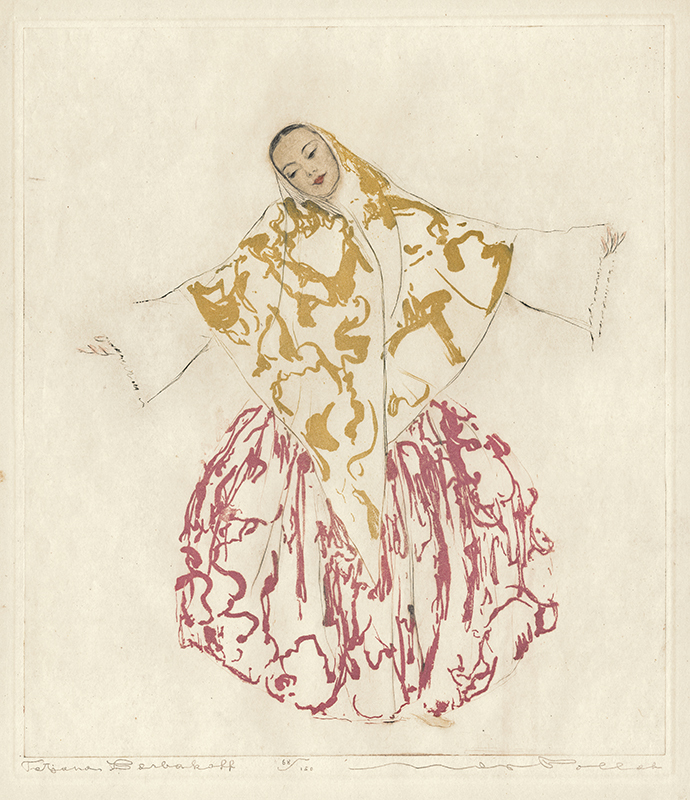
19th, 20th & 21st Century Fine Prints
707-546-7352 · fax 707-546-7924 · web: www.annexgalleries.com · email: artannex@aol.com
Dancers: Tatjana Barbakoff by Max Pollak

Dancers: Tatjana Barbakoff
Max Pollak
Dancers: Tatjana Barbakoff
Max Pollak
1886 - 1970 (biography)Tatjana Barbakoff was a ballet and Chinese-style dancer who rose to fame in Europe in the 1920s and '30s. Born Cilly Edelberg in what is now Latvia in 1899, to a Russian-born father and Chinese-born mother, she began taking ballet lessons as a very young child. Surrounded by the far Eastern influences of her mother's former life in China, Barbakoff was inspired to create her own Chinese-style dances, which she performed throughout her childhood.
Her mother's death and her father's subsequent remarriage spurred 19-year old Barbakoff to leave for Berlin with her lover Georg Waldmann, who had served in Latvia as a soldier in World War I. There they married and began careers as performers, she as a professional dancer under the same Tatjana Barbakoff, he as a singer under the name Marcel Boissier. Barbakoff's time in Berlin was tremendously successful. She created her own style of movement informed by the different cultural influences of her childhood and her love of mime and dance. Costume, as well, became a focal point in her career. She collaborated with several artists to create a trove of unique costumes that also reflected her unusual background. She became the muse of many artists of the burgeoning Expressionist arts scenes in Berlin and Cologne; portraits of her can be found in museums throughout Europe.
Tensions in Germany, and particularly the rise of anti-Jewish sentiment, forced Barbakoff to flee for Paris in 1933. There she lived and continued to work as a performer, including at the dance academy of Isadora Duncan's brother, Raymond. Her freedom was limited, however, and in 1940, she was interred at the Gurs detention camp. During the armistice between France and Germany in 1942, she was released, after which she lived on the run, hiding in various obliging family homes in the country before, eventually, being caught, and sent to Auschwitz. She died there in the gas chambers on February 6, 1944.
More can be found on her extraordinary life at the Jewish Women's Archive (jwa.org)
.Albert Einstein wrote on his personal stationery in Vienna, August 5, 1928, to his friend the painter and printmaker Max Pollak, thanking him for sending a copy of his color aquatint of the dancer Tatjana Barbakoff to "Frau Eitingon." This refers to the wife of Freud's colleague, the noted psychoanalyst Max Eitingon (1881-1943), who had undergone analysis with Freud in 1908-9 and went on to found the Berlin Psychoanalytic Institute, the International Psychoanalytic Association, and several other psychoanalytic organizations.
The etching was evidently a gift from Freud, for he states that "I would gladly have sent the purchase amount of S140 or $20 to you in Stockholm, if I had been sure you wouldn't soon be changing your location in Sweden. If I hear nothing more from you, then I will remain in your debt until we are both in Vienna again." Pollak had recently emigrated from Vienna to the United States, which is why Freud gave a dollar figure for the purchase price.
Many of Pollak's early European prints were confiscated by the Nazis, who considered them "degenerate" because he was Jewish.
